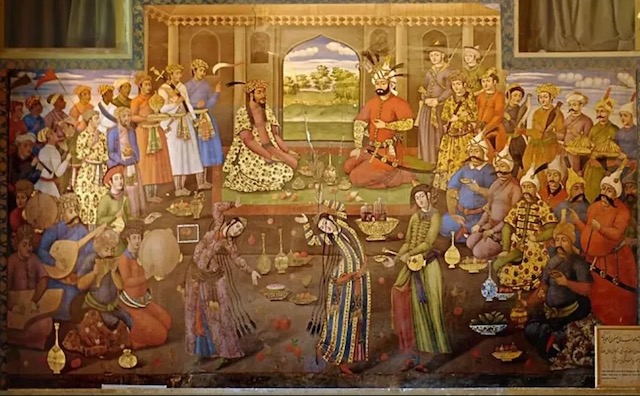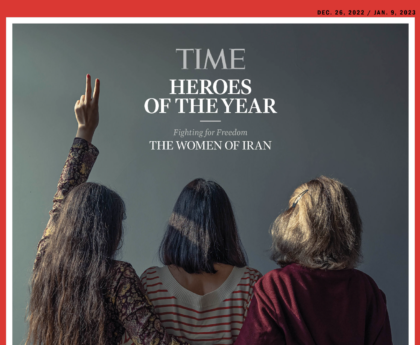Nowruz has been celebrated in Iran and the Persian diaspora for more than 3,000 years. Its roots are as a feast day in Zoroastrianism, a religion practiced in ancient Persia that viewed the arrival of spring as a victory over darkness.
The Persian New Year is widely celebrated in regions which were once part of the Persian Empire. In the course of the most recent thousand years, Nowruz has developed and extended, fusing new social, religious and social influences as it spread along the Silk Roads. Nowruz was officially enrolled on the UNESCO List of Intangible Cultural Heritage of Humanity in 2009.
Traditionally celebrated on the vernal equinox, many begin preparations for Nowruz weeks in advance. In the leadup to the holiday, people perform ritual dances and fill vessels in their home with water, which is associated with health, in an attempt to banish bad luck.
Nowruz is an official holiday in Iran, Afghanistan, Albania, Azerbaijan, Georgia, Iraqi Kurdistan, Kazakhstan, Kosovo, Kyrgyzstan, Mongolia’s Bayan-Olgii province, Tajikistan, Turkmenistan, and Uzbekistan, and it’s widely celebrated in places like Turkey, Indian and other places with Persian enclaves.
Ancient Roots
The Shahnameh credits the foundation of Nowruz to the mythical Iranian King Jamshid, who saves mankind from a winter destined to kill every living creature. To defeat the killer winter, Jamshid constructed a throne studded with gems.
He had demons raise him above the earth into the heavens; there he sat, shining like the Sun. The world’s creatures gathered and scaftered jewels around him and proclaimed that this was the New Day (Now Ruz). This was the first day of Farvardin, which is the first month of the Iranian calendar.
Nowruz is partly rooted in the , tradition of Iranian religions, / such as Mithraism and Zoroastrianism. In Mithraism, festivals had a deep linkage with the Sun’s light. The Iranian festivals such as Mehregan (autumnal equinox), Tirgan, and the eve of Chelle ye Zemestan (winter solstice) also had an origin in the Sun god (Mithra).
Among other ideas, Zoroastrianism is the first monotheistic religion that emphasizes broad concepts such as the corresponding work of good and evil in the world, and the connection of humans to nature.
Zoroastrian practices were dominant for much of the history of ancient Iran.
Achaemenid period
A bas-relief at the Apadana, Persepolis, depicting Armenians bringing their famous wine to the king Although the word Nowruz is not recorded in Achaemenid inscriptions, there is a detailed account by Xenophon of a Nowruz celebration taking place in Persepolis and the continuity of this festival in the Achaemenid tradition.
Nowruz was an important day during the Achaemenid Empire (c. 550-330 BCE). Kings of the different Achaemenid nations would bring gifts to the King of Kings. The significance of the ceremony was such that King Cambyses Il’s appointment as the king of Babylon was legitimized only after his participation in the referred annual Achaemenid festival.
Parthian and Sassanid periods
Nowruz was the holiday of Parthian dynastic empires who ruled Iran (248 BCE-224 CE) and the other areas ruled by the Arsacid dynasties outside of Parthia (such as the Arsacid dynasties of Armenia and Iberia). There are specific references to the celebration of Nowruz during the reign of Vologases I (51-78 CE). Before Sassanids established their power in Western Asia around 300 CE, Parthians celebrated Nowruz in autumn, and the first of Farvardin began at the autumn equinox. During the reign of the Parthian dynasty, the spring festival was Mehregan, a Zoroastrian and Iranian festival celebrated in honor of Mithra.
After the Arab-Muslim conquest
Nowruz survived the Muslim conquest of Persia of 650 CE. Nowruz became the main royal holiday during the Abbasid period. Much like their predecessors in the Sasanian period, Dehgans would offer gifts to the caliphs and local rulers at the Nowruz and Mehragan festivals. Following the demise of the caliphate and the subsequent re-emergence of Iranian dynasties such as the Samanids and Buyids, Nowruz became an even more important event. The Buyids revived the ancient traditions of Sassanian times and restored many smaller celebrations that had been eliminated by the caliphate.





